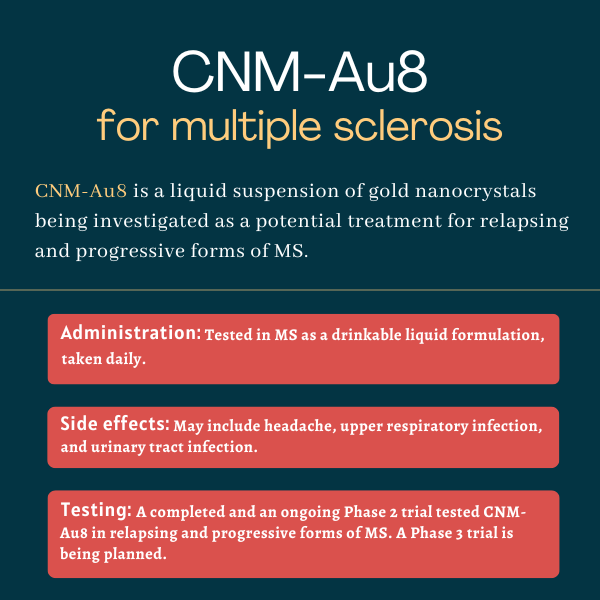FAQs about CNM-Au8 in MS
CNM-Au8 is an experimental multiple sclerosis (MS) treatment expected to protect nerve cells and boost myelin production to potentially ease disease symptoms and reverse disease progression. The oral, drinkable medication works by increasing energy reserves and clearing toxic substances resulting from the metabolism of nerve cells and oligodendrocytes, the cells that produce the myelin coating that is damaged in MS.
After Phase 2 trials of CNM-Au8 showed promising results in adults with relapsing-remitting multiple sclerosis, Clene, the therapy’s developer, announced plans to launch a global Phase 3 clinical trial to further evaluate the therapy in people with MS. Pending positive results, that trial will likely be used to support an application requesting CNM-Au8’s approval by the U.S. Food and Drug Administration, but it’s too early to know when the medication might be approved.
Clinical trials of CNM-Au8 have excluded patients who are pregnant, breastfeeding, or planning to become pregnant during the studies or within six months after treatment discontinuation. It is not known if the treatment is safe for use during pregnancy.
Some patients in clinical trials have seen benefits within about three months. In the REPAIR-MS Phase 2 clinical trial, which involved individuals with relapsing-remitting multiple sclerosis, CNM-Au8 treatment resulted in a significant increase in energy metabolism, as well as significant improvements in vision and physical abilities, within 12 weeks of treatment initiation.
Hair loss and weight gain have not been reported in multiple sclerosis clinical trials as side effects of CNM-Au8. Patients should talk with their care teams if they experience any unexpected side effects during treatment.
Related Articles

 Fact-checked by
Fact-checked by 






